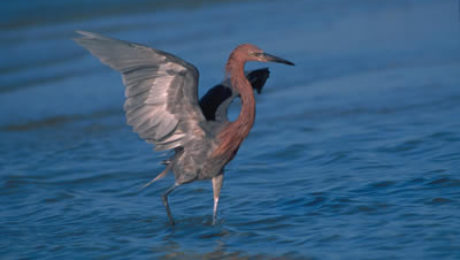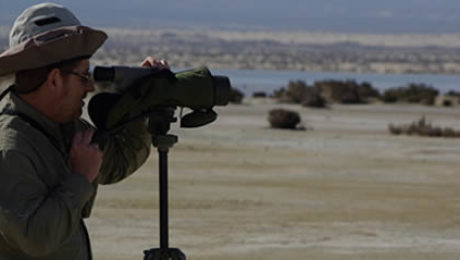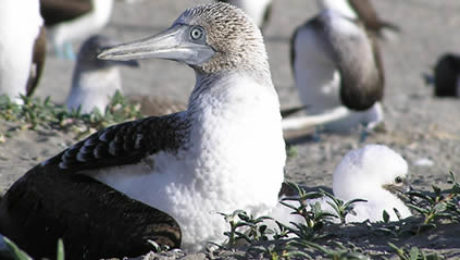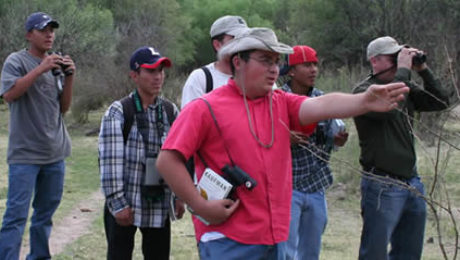Christmas Bird Count report: La Paz, Baja California Sur
The seventh Ensenada de La Paz Christmas Bird Count was hugely successful. A total of 23 participants documented a record 153 species. Some highlights included 541 Marbled Godwits, one Hermit Thrush, twenty-two Reddish Egrets and one Pomarine Jaeger.
- Published in News
Habitat conservation and bird monitoring in Laguna Figueroa, Baja California
Project Description Laguna Figueroa is the most important wintering and breeding habitat for several priority bird species in the Baja California peninsula, including the threatened Snowy Plover and the endangered California Least Tern. Despite being a critical area for bird conservation, it has no legal protection. Landowners are planning to modify the area to use
- Published in Awards Program
Monitoring of seabirds in Bahía Santa Maria, Sinaloa: population size, breeding habitat, reproductive success, and diet
Project Description In the Gulf of California, Bahía Santa Maria (BSM) is a wetland of high ecological and economic importance. It is an important congregation site for shorebirds, ducks, and seabirds and is subject to increasing anthropogenic pressure from fishing and adjacent agriculture activities. Although BSM is designated as a priority wetland under a several
- Published in Awards Program
Community-based conservation of the birds of the Oasis de la Sierra del Mechudo, Baja California Sur
Project Description In the southeast of the Baja California Peninsula are a series of oases, including El Salto, Primer and Segundo Bosque (to the south of the Giganta mountain range). These habitats are located in the arid region of the Peninsula. We observed a high bird species richness that includes resident and migratory species, including
- Published in Awards Program
Waterbird monitoring in estuaries of the Hermosillo coast and on the Sonoran midriff islands
Project Description This project will build upon the Prescott College Kino Bay Center for Cultural and Ecological Studies’ 10-year Waterbird Monitoring Program (WMP) in the Sonoran Midriff Island region of the Gulf of California. The region’s islands and estuaries provide critical nesting, roosting, and feeding habitat for many SJV priority species. The WMP currently focuses
- Published in Awards Program
Mexican seabird colony catalog and monitoring database
Project Description In western North America, seabird colony catalogs and monitoring programs exist for all of Alaska, Washington, Oregon, California, and Hawaii. The next logical step is Mexico. A seabird colony catalog is essentially a list of all known seabird colonies in a given region, with best available information on species composition and population sizes.
- Published in Awards Program
Shorebird monitoring (with emphasis on Marbled Godwit, Red Knot, and Short-billed Dowitcher) in the Guerrero Negro Lagunar Complex, Baja California Sur
Project Description This project involves an annual monitoring effort of wintering shorebirds in the Guerrero Negro Lagunar Complex, located in the central western portion of the Baja peninsula. This is the one of the principal wintering site for shorebirds in this region. We will continue with the banding and re-observation of Marbled Godwit, Pacific Red
- Published in Awards Program
Community participation and ecosystem services as conservation tools that use birds as indicators of habitat value
Project Description Payments for ecosystem services are used by the federal government and are quickly becoming an important conservation tool available in Mexico today. However, lack of data on how to distinguish which habitats are most important for wildlife is still prevalent. El Cúbajo microwatershed is a key area in Southern Sonora and one in
- Published in Awards Program
Community outreach in La Purísima for bird conservation, Baja California Sur
Project Description This project will work with community members of La Purísima, Baja California Sur, to gain a better understanding of the importance of the region to birds. Specific objectives include: (1) obtain an description of the birds of the region throughout the annual cycle in order to determine bird use of this oasis; (2)
- Published in Awards Program
The 2009 Veracruz Model: An Innovative Approach of Training, Stewardship, and Capacity Building for Wetland Conservation in Mexico
Project Description Since 1996, the Arizona Game and Fish Department has partnered with various wetland organizations and scientists from the United States, Canada, and Mexico, and the Ramsar Convention, to offer training opportunities for wetland managers in Mexico. On February 2-15, 2009, the 11th Wetlands Training Course will take place in the State of Baja
- Published in Awards Program


 English
English  Español
Español 



